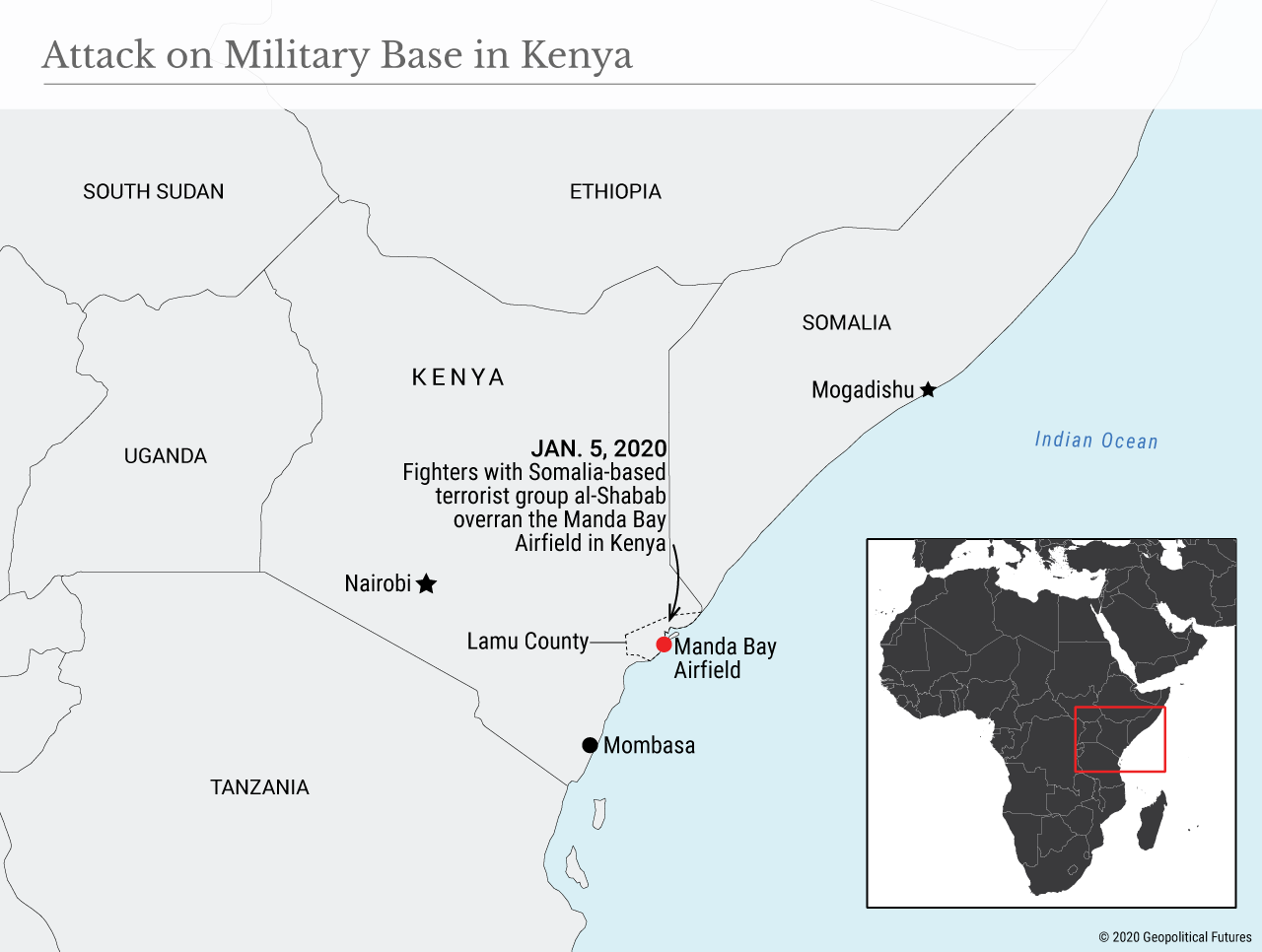By: Hilal Khashan
While the world was still reeling from the death of Iranian Gen. Qassem Soleimani, an attack occurred in Kenya against U.S. and Kenyan military forces.
In the early hours of Sunday, fighters with Somalia-based terrorist group al-Shabab overran the Manda Bay Airfield. The airfield is part of Camp Simba, a key military base for Kenyan-U.S. counterterrorism operations, located in Lamu County near the border with Somalia.
The attack was the al-Qaida-linked group’s first on U.S. forces in Kenya and lasted several hours before the attackers were repelled. U.S. and Kenyan officials said the attack resulted in the deaths of three Americans (one soldier and two contractors) and damaged six civilian aircraft operated by contractors.
A Kenyan police report obtained by the Associated Press indicated the destruction was more extensive, saying the attackers destroyed two fixed-wing aircraft, a U.S. Cessna and a Kenyan Cessna, along with two U.S. helicopters and several U.S. vehicles. According to al-Shabab, there were 17 U.S. casualties as well as nine Kenyan soldiers killed and seven aircraft destroyed.
At first glance, the attack does not necessarily register as significant. Al-Shabab has carried out frequent attacks in Kenya since 2011, when Kenya sent troops to Somalia to help fight the group.
Over the past two years, the United States has stepped up its airstrikes against al-Shabab targets, to which al-Shabab responded with an uptick in attacks against Kenyan military and civilian targets. But until now, the group has avoided U.S. forces.
This fact plus the timing and global context suggest the attack may be tied to other, more significant events in the neighboring Middle East and therefore worth more consideration.
Al-Shabab said the Kenya attack was part of a pro-Palestinian jihadist campaign that the group joined back in 2019, but there are reasons to think it may have been retribution for Soleimani’s death.
At this point the evidence is weak, but it appears the attack was hastily organized and poorly executed.
The weapons used were not particularly sophisticated, and the equipment that was damaged – going by the more detailed U.S. report – will not affect the ability of the United States to conduct its counterterrorism operations. The main objective appears to have been to make headlines.
The assailants failed to force their way into the base, and five of them were killed.
Indirect mortar fire inflicted the U.S. and Kenyan casualties, and the aircraft were reportedly damaged by fuel tank fires. The entire episode was concluded within a couple of hours.
It also may not be a coincidence that the attack comes just days after Soleimani’s killing. It’s true that al-Shabab’s attacks in Kenya are frequent, but this is the first time the group has targeted a U.S. base in the country.
Soleimani’s death provided not only a potential motive for an anti-American attack but also the opportunity to strike a U.S. target while the U.S. military was focused on the threat of reprisal attacks closer to Iran – in Iraq or Saudi Arabia, for example – as well as on troop deployments in the Middle East.
Finally, it is noteworthy that al-Shabab claimed that it attacked the military base for the sake of "al-Quds" (Jerusalem), which is similar rhetoric to that used by the Iranians to legitimize previous operations of Soleimani, who commanded Iran’s elite Quds Force.
Though the Islamic Revolutionary Guard Corps and al-Shabab belong to different branches of Islam, the traditional Sunni-Shiite divide between the two groups is not insurmountable, and indeed the two have economic ties.
Al-Shabab exports Somali charcoal, which is famous for its quality, by boat to Iran, where it is repackaged and sold as an Iranian product. Al-Shabab needs funds to cover its expenses, and the Iranians have always been eager to cooperate even though al-Shabab is Sunni.
This is not the first instance of the IRGC crossing the religious divide with other end goals in mind. Hamas works with the Iranians despite their distinct ideological differences, which became obvious after the inception of the Syrian uprising in 2011.
Business transactions and political ideology are two separate matters.
The full range of implications of Soleimani's killing has yet to fully play out and be understood.
In the case of the Kenya attack, the timing, target, poor execution and al-Shabab's rhetoric and economic links to the IRCG are enough to raise the question of a possible link between the two, which would indicate a level of internationalization of the conflict.
Unfortunately, that is all we have to go on at the moment, and no firm conclusions can be drawn.
But the killing of Soleimani was a significant event, and we must be alert for potential ramifications not just in the immediate neighborhood.

0 comments:
Publicar un comentario